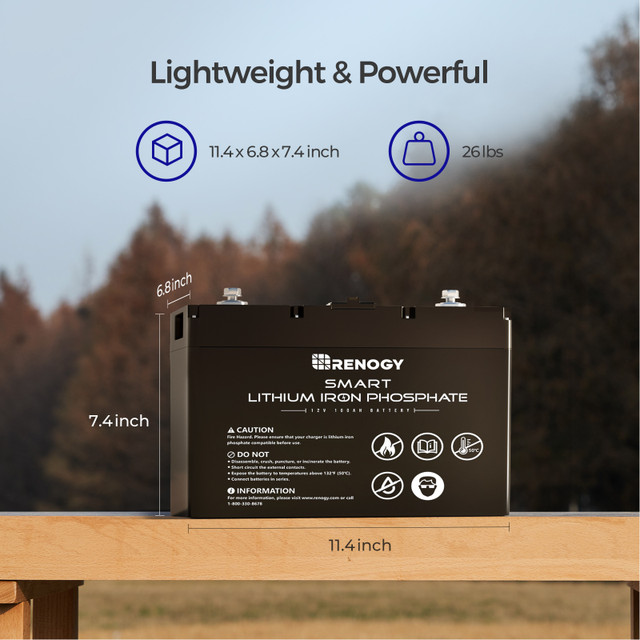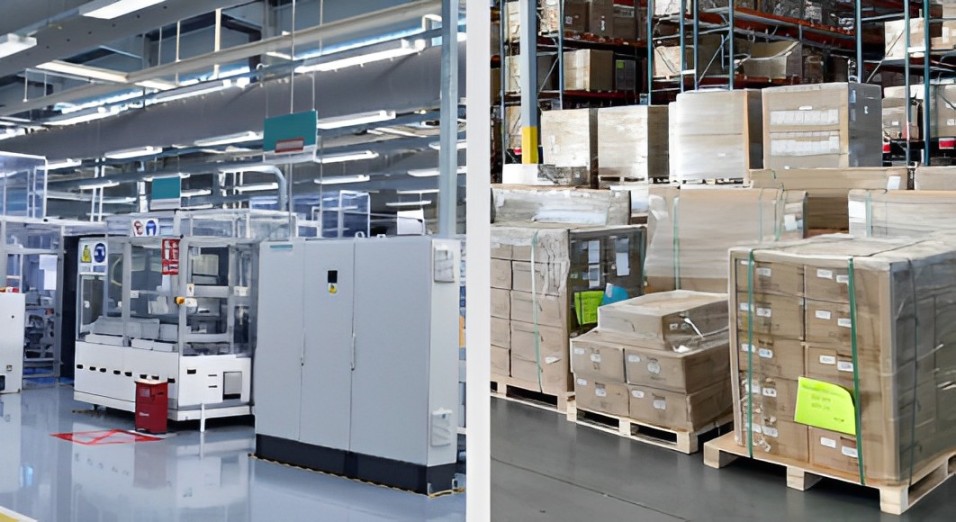How Long Do LiFePO4 Batteries Last?
Are you curious about the lifespan of LiFePO4 batteries? LiFePO4 batteries, known for their stability and efficiency, have revolutionized energy storage. But how long do these powerhouses really last? A LiFePO4 battery has been known to have over 4000 cycles, which implies it may be charged and discharged up to 4000 times before needing to be replaced. Imagine using your smartphone's battery twice a day for over 5 years without any significant degradation.
In this article, we'll dive into the factors affecting LiFePO4 battery life, exploring their impressive cycle count and years of service. Whether you're considering solar power for your home or seeking reliable energy solutions for your business, discovering the true potential of LiFePO4 batteries will help you make informed decisions about your energy future.

What is a LiFePO4 (lithium iron phosphate) battery?
LiFePO4, or lithium iron phosphate, batteries are an advanced type of lithium-ion battery that has gained prominence in recent years. These batteries utilize lithium iron phosphate as the cathode material, distinguishing them from conventional lithium-ion batteries. The unique chemical composition of LiFePO4 batteries results in a more stable and safer energy storage solution, making them increasingly popular in various applications.
LiFePO4 batteries are characterized by their exceptional stability, long cycle life, and enhanced safety features. They maintain a consistent voltage output throughout their discharge cycle and can withstand thousands of charge-discharge cycles without significant degradation. This technology has found widespread use in renewable energy storage systems, electric vehicles, marine applications, and off-grid power solutions. As the world moves towards more sustainable energy practices, LiFePO4 batteries continue to play a crucial role in advancing energy storage technology.
How long do LiFePO4 battery last?
LiFePO4 batteries, also known as lithium iron phosphate batteries, can be cycled more than 4,000 times, far exceeding many other battery types. Even with daily use, these batteries can last for more than ten years. Their high cycle life is attributed to their robust chemistry, which minimizes degradation over time. This longevity reduces the need for frequent replacements, lowering long-term costs and reducing environmental impact.

A cycle refers to a complete charge and discharge of the battery. Lithium iron phosphate batteries are rated for over 4,000 cycles, meaning they can be fully charged and discharged over 4,000 times before their capacity is significantly reduced. This extraordinary cycle life translates to years of reliable use, making them an excellent choice for applications requiring frequent charging and discharging, such as solar storage systems or electric vehicles.
It's worth noting that the actual number of cycles may vary based on factors such as depth of discharge, charging method, and operating conditions. However, even under real-world conditions, LiFePO4 batteries consistently demonstrate superior service life compared to other lithium-ion technologies.
Investing in lithium iron phosphate batteries ensures durability and efficiency, providing a dependable energy solution that can power your needs for years to come.
Factors that affecting LiFePO4 battery life
LiFePO4 batteries are known for their long lifespan, but several factors can influence their overall longevity. Understanding these factors can help you maximize the life of your battery and ensure optimal performance.

1. Depth of Discharge (DoD)
The depth of discharge refers to how much of the battery's capacity is used before recharging. Regularly discharging a battery to a very low level can reduce its lifespan. For LiFePO4 batteries, maintaining a moderate DoD, typically around 80%, can significantly extend their life.
2. Charging Method
The way you charge your LiFePO4 battery also impacts its lifespan. Using a charger designed specifically for lithium iron phosphate batteries ensures that the battery is charged at the correct voltage and current levels. Avoiding overcharging and undercharging is crucial for maintaining battery health.
3. Operating Temperature
LiFePO4 batteries perform best within a specific temperature range, typically between 0°C and 45°C. Exposure to extreme temperatures, either hot or cold, can degrade the battery's performance and reduce its cycle life. Proper thermal management, such as using insulation or cooling systems, can help maintain an optimal temperature.
4. Storage Conditions
If you need to store your LiFePO4 battery for an extended period, the storage conditions play a critical role in preserving its life. Store the battery in a cool, dry place and at a partial state of charge, ideally around 50%. This helps prevent capacity loss and maintains the battery's integrity.
5. Usage Patterns:
Frequent and consistent use can help keep the battery's chemistry active and healthy. Conversely, long periods of inactivity can lead to self-discharge and chemical imbalances. Regularly using and cycling the battery helps maintain its performance and longevity.
6. Quality of the Battery
Not all LiFePO4 batteries are created equal. The quality of materials and manufacturing processes can significantly impact battery life. Investing in high-quality batteries from reputable manufacturers ensures better performance and a longer lifespan.
By paying attention to these factors, you can extend the life of your LiFePO4 battery, ensuring reliable and efficient power for years to come. Proper care and maintenance can make a significant difference, providing you with a sustainable energy solution that meets your needs.
How do you properly store and maintain a LiFePO4 battery to extend its lifespan?
Proper storage and maintenance are key to maximizing the lifespan of your LiFePO4 battery. By following these best practices, you can ensure that your lithium iron phosphate battery remains reliable and efficient for years to come.

1. Store at the Right Temperature
LiFePO4 batteries should be stored in a cool, dry place. The ideal storage temperature is between 0°C and 25°C (32°F to 77°F). Avoid exposing the battery to extreme temperatures, as both excessive heat and cold can degrade its performance and shorten its lifespan.
2. Maintain a Partial Charge
For long-term storage, keep your LiFePO4 battery at a partial state of charge, ideally around 50%. Storing the battery fully charged or completely discharged can lead to capacity loss over time. A partial charge helps maintain the battery’s chemistry and prolong its life.
3. Use a Suitable Charger
Always use a charger designed specifically for LiFePO4 batteries. A suitable charger will ensure that the battery is charged at the correct voltage and current levels, preventing overcharging and undercharging. Proper charging is essential for maintaining battery health.
4. Avoid Over-Discharging
While LiFePO4 batteries are known for their durability, repeatedly discharging them to very low levels can reduce their lifespan. Try to keep the depth of discharge (DoD) moderate, ideally not going below 20% capacity before recharging.
5. Keep It Clean and Dry
Ensure that the battery terminals and casing are kept clean and free from moisture. Dirt and moisture can cause corrosion and electrical issues. Regularly inspect the battery for any signs of damage or wear, and clean it with a dry cloth if necessary.
Conclusion
LiFePO4 batteries are revolutionizing energy storage, from powering off-grid homes to propelling electric vehicles. Their impressive longevity and stability make them a game-changer in the quest for sustainable power solutions. As we face growing energy demands and environmental concerns, these robust batteries offer a glimpse into a greener future. Among the leaders in this field, Renogy stands out with their high-quality LiFePO4 batteries. Known for reliability and performance, Renogy's offerings are ideal for solar setups and mobile power needs. Whether you're an eco-conscious homeowner or an adventure seeker, investing in LiFePO4 technology, particularly from trusted brands like Renogy, could be your key to unlocking long-term, efficient energy storage.
FAQs about lifepo4 battery life
1. How long will a 100Ah LiFePO4 battery last?
Depending on the load, a 100Ah LiFePO4 battery can run for 5 days or for 30 minutes. A 2,000W gadget would only last around 30 minutes, but a 20W device might run for almost 50 hours. Its entire lifespan, which may surpass 10 years with good care, is also influenced by factors like as working circumstances, charging techniques, and depth of discharge.
2. What are the disadvantages of LiFePO4?
Some of the disadvantages of employing LiFePO4 batteries are their reduced energy density, greater cost, slower charging speed, lower discharge rate, and limited temperature range. Notwithstanding these drawbacks, their longevity and stability frequently surpass these restrictions, making them a well-liked option for a range of applications.
3. What is the service life of a LiFePO4 battery?
Under the same operating circumstances, the service life of a LiFePO4 battery generally varies from 7 to 8 years, whereas lead-acid batteries have a lifespan of around 1 to 1.5 years. LiFePO4 batteries offer dependable, long-lasting performance for more than 4,000 cycles, which makes them an economical and long-lasting energy storage option.











